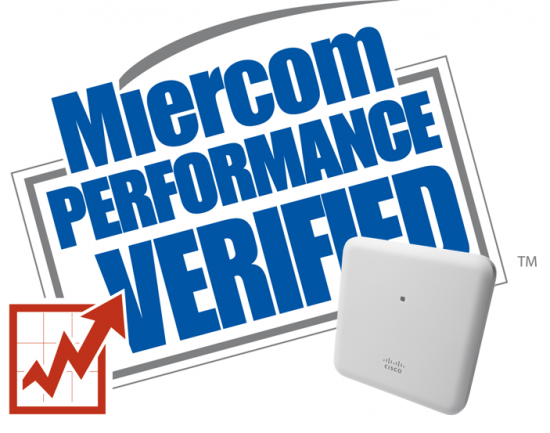In case you haven’t heard, 802.11ac Wave 2 is here. We’ve been shipping our first 802.11ac Wave 2 access points, the Aironet 1850 and 1830 since the the middle of 2015 and the list of 802.11ac Wave 2 client devices is growing almost daily. The most important enhancement to 802.11ac Wave 2 is multi-user MIMO (MU-MIMO). MU-MIMO gives access points the ability to transmit to multiple clients at the same time, instead of one after a nother. For a more in-depth look at MU-MIMO, check out our 802.11ac White Paper.
nother. For a more in-depth look at MU-MIMO, check out our 802.11ac White Paper.
At Cisco we pride ourselves on high-performing hardware, as well as an unparalleled software feature set. So to back this up, we asked Miercom, a leading independent testing company, to help us verify the performance of our 802.11ac Wave 2 access points against the competition. For Cisco, the contenders were:
- Cisco Aironet 1852i, a 4×4:4 AP, supports MU-MIMO, and has two gigabit Ethernet uplinks, and a USB port.
- Cisco Aironet 1832i, a 3×3:2 AP, with MU-MIMO support and a USB port.
- Cisco Aironet 3702i, a 4×4:3 AP with Cisco High Density Experience (HDX) and a slot for an expansion module.
- The results from Miercom are clear: Continue reading “Miercom Report: Out in Front with Wave 2”





CONNECT WITH US